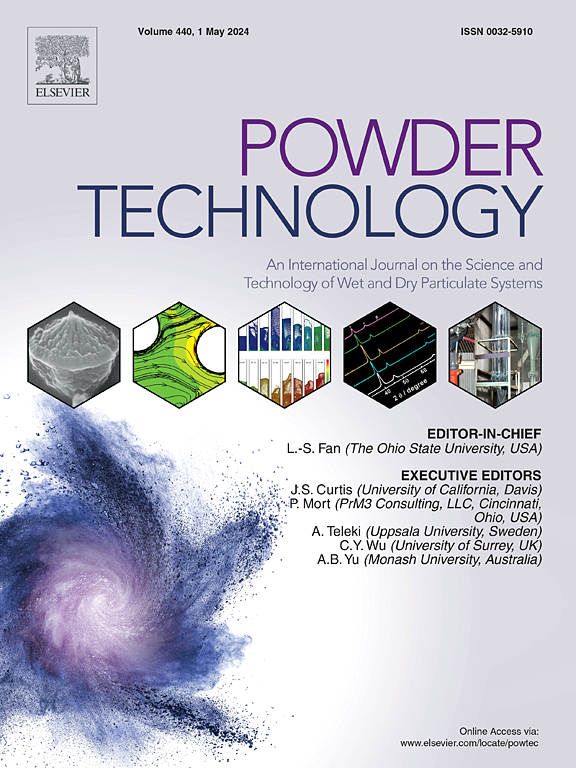Numerical study of the dynamic aggregation behaviors of oil droplets in the porous filter media consisting of basalt particles
IF 4.6
2区 工程技术
Q2 ENGINEERING, CHEMICAL
引用次数: 0
Abstract
Porous granular media based on the gravity-driven principle have been proven to be efficient for the separation of oil-water emulsions. However, the complexity of the relevant parameters and the intricate structure of porous media pose great challenges to the design and optimization of the separation process. In this study, the dynamic behavior of oil droplets within the porous structure was numerically analyzed based on the Euler-Euler model and the coupling of the two-phase flow and level set method. The oil-water separation efficiency and droplet trajectory were analyzed under different conditions, considering the deformation of the droplets, kinetic viscosity, and interactions among the droplets. The simulation results show the real-time movement, aggregation, and detachment of oil droplets within the porous filter. The results are useful for understanding the demulsification in a microscopic perspective and provide theoretical guidance for designing more efficient oil-water separation systems.

玄武岩颗粒多孔滤料中油滴动态聚集行为的数值研究
基于重力驱动原理的多孔颗粒介质已被证明是分离油水乳状液的有效介质。然而,相关参数的复杂性和多孔介质的复杂结构给分离过程的设计和优化带来了很大的挑战。本研究基于欧拉-欧拉模型,结合两相流和水平集耦合方法,对多孔结构内油滴的动态行为进行了数值分析。考虑液滴的变形、运动粘度和相互作用,分析了不同条件下的油水分离效率和液滴轨迹。模拟结果显示了油滴在多孔过滤器内的实时运动、聚集和分离。研究结果有助于从微观角度理解破乳过程,为设计更高效的油水分离系统提供理论指导。
本文章由计算机程序翻译,如有差异,请以英文原文为准。
求助全文
约1分钟内获得全文
求助全文
来源期刊

Powder Technology
工程技术-工程:化工
CiteScore
9.90
自引率
15.40%
发文量
1047
审稿时长
46 days
期刊介绍:
Powder Technology is an International Journal on the Science and Technology of Wet and Dry Particulate Systems. Powder Technology publishes papers on all aspects of the formation of particles and their characterisation and on the study of systems containing particulate solids. No limitation is imposed on the size of the particles, which may range from nanometre scale, as in pigments or aerosols, to that of mined or quarried materials. The following list of topics is not intended to be comprehensive, but rather to indicate typical subjects which fall within the scope of the journal's interests:
Formation and synthesis of particles by precipitation and other methods.
Modification of particles by agglomeration, coating, comminution and attrition.
Characterisation of the size, shape, surface area, pore structure and strength of particles and agglomerates (including the origins and effects of inter particle forces).
Packing, failure, flow and permeability of assemblies of particles.
Particle-particle interactions and suspension rheology.
Handling and processing operations such as slurry flow, fluidization, pneumatic conveying.
Interactions between particles and their environment, including delivery of particulate products to the body.
Applications of particle technology in production of pharmaceuticals, chemicals, foods, pigments, structural, and functional materials and in environmental and energy related matters.
For materials-oriented contributions we are looking for articles revealing the effect of particle/powder characteristics (size, morphology and composition, in that order) on material performance or functionality and, ideally, comparison to any industrial standard.
 求助内容:
求助内容: 应助结果提醒方式:
应助结果提醒方式:


